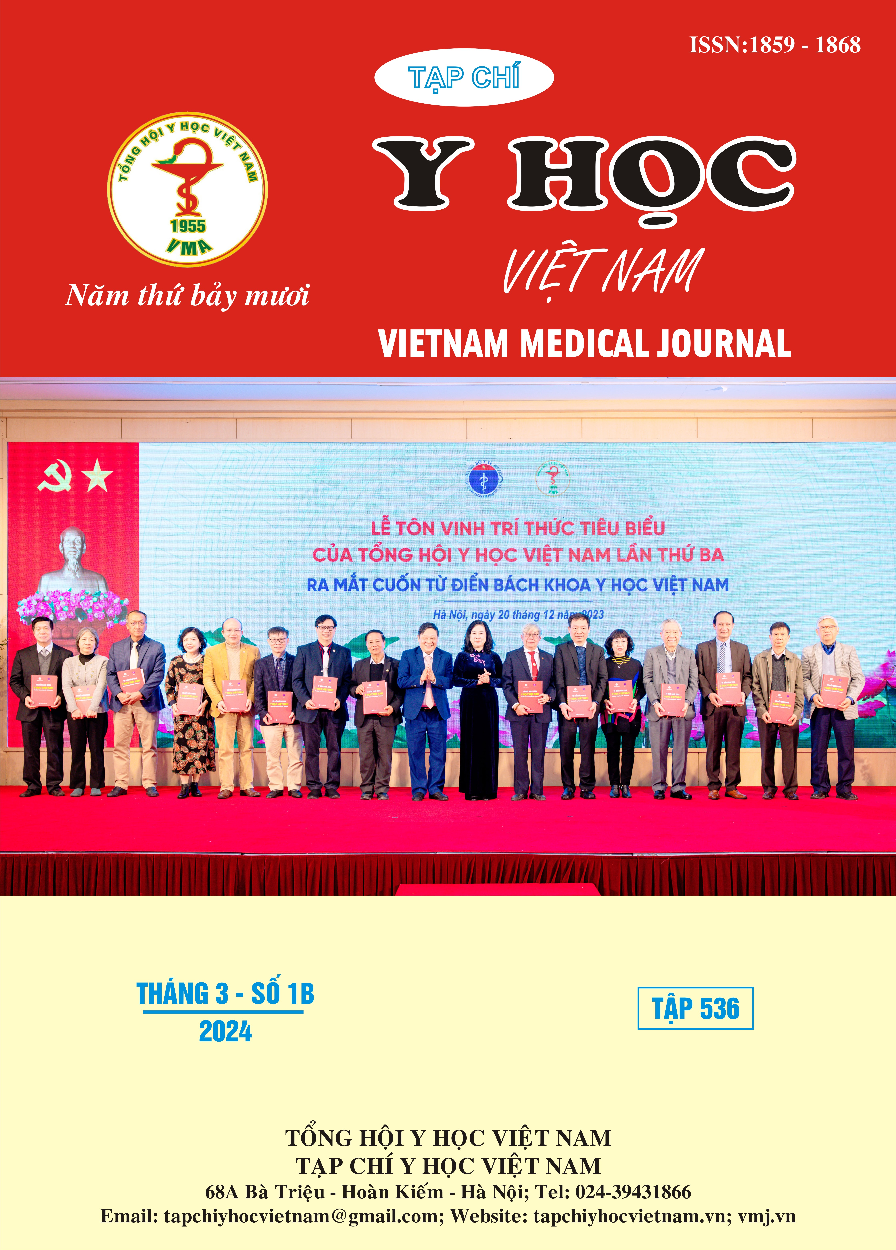FEATURES OF INFECTIOUS COMPLICATIONS IN PATIENTS WITH NEPHROTIC SYNDROME AT CHILDREN’S HOSPITAL 2, HOCHIMINH CITY, FROM JANUARY 2021 TO AUGUST 2022
Main Article Content
Abstract
Background: Nephrotic syndrome is one of the most common glomerular diseases in children. Infection is one of the worst complications that could be fatal in pediatric nephrotic syndrome, related to the pathophysiology and immuno-supression method. The prevalence of infection decreases continously in the developed countries, while it is still a big problem in the developing countries, especially Asian countries. We try to describe some features of infectious complications in patients with nephrotic syndrome at Children's Hospital 2, Hochiminh city. Objective: Describe features of epidemiology, clinical, blood tests, risk factors and outcomes of using empiric antibiotics in patients with nephrotic syndrome at Children's Hospital 2 (CH2), Hochiminh city, from January 2021 to August 2022. Method: Retrospective study, descriptive study. Results: From January 2021 to August 2022, there are 264 patients, with 376 hospital admissions, those were diagnosed with nephrotic syndrome at Department of Nephrology and Endocrinology, CH2. The prevalence of infectious complications is 41,3%. The most cases are respiratory infections, cellulitis, and peritonitis. The mean age is 7,17 ± 4,04 years old, and the ratio male:female is nearly 2:1. The rate of children who live in HCM city is 12,8%. The signs and symptoms of infection are fever (36,7%), elevated neutrophils (49,5%), and increased CRP level (45%). The results of culture micro-organism are Pseudomonas aeruginosa with three cases. The risk factors of infection are fever with OR = 19,23 (CI 95%: 4,231-87,401; p< 0,001), and CRP level > 10mg/L with OR = 7,316 (CI 95%: 2,651-20,19; p< 0,001). The rate of using antibiotics is 92,7%, and the outcome is good with no fatal.
Article Details
References
2. Zheng Z, Chen G, Jing X, Liu L, Yang L. The risk factors for children with primary nephrotic syndrome: a systematic review and meta-analysis. Transl Pediatr. 2021;10(12):3184-3193. doi:10.21037/TP-21-468
3. Lebel A, Kropach N, Ashkenazi-Hoffnung L, Huber-Yaron A, Davidovits M. Infections in Children With Nephrotic Syndrome: Twenty Years of Experience. Clin Pediatr (Phila). 2020;59(7): 692-698. doi:10.1177/ 0009922820908583
4. Zhang H, Qiu S, Zhong C, et al. Risk Factors for Poor Prognosis of Severe Infection in Children With Idiopathic Nephrotic Syndrome: A Double-Center, Retrospective Study. Front Pediatr. 2021; 9:707. doi:10.3389/FPED.2021.656215/ BIBTEX
5. Lê Thị Ngọc Dung, Ngô Thị Kim Nhung, Trần Thẩm Diệu. Biến chứng của hội chứng thận hư tại Bệnh viện Nhi Đồng II. Tạp chí Y học Thành phố Hồ CHí Minh. Published online 2006:31-36.
6. Gulati S, Kher V, Arora P, Gupta S, Kale S. Urinary tract infection in nephrotic syndrome. Pediatr Infect Dis J. 1996;15(3):237-240. doi:10.1097/00006454-199603000-00012
7. Alfakeekh K, Azar M, Sowailmi B Al, et al. Immunosuppressive burden and risk factors of infection in primary childhood nephrotic syndrome. J Infect Public Health. 2019;12(1):90-94. doi:10.1016/J.JIPH.2018.09.006
8. Moorani KN, Ahmed Khan KM, Ramzan A. Infections in children with nephrotic syndrome. J Coll Physicians Surg Pakistan. 2003;13(6):337-339. doi:06.2003/JCPSP.337339
9. Chopra D, Kini P, Bhaskaranand N, Aroor S. Spectrum of infections in children with nephrotic syndrome. Int J Infect Dis. 2010;14(1):e419. doi:10.1016/j.ijid.2010.02.552
10. Lebel A, Kropach N, Ashkenazi-Hoffnung L, Huber-Yaron A, Davidovits M. Infections in Children With Nephrotic Syndrome: Twenty Years of Experience. Clin Pediatr (Phila). 2020; 59(7):692-698. doi:10.1177/0009922820908583


